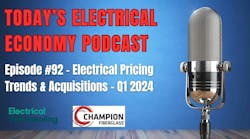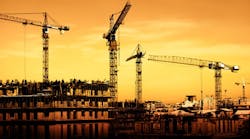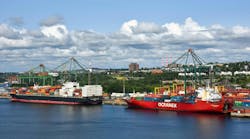Building permits see nice bump in January. Privately-owned housing units authorized by building permits in January were at a seasonally adjusted annual rate of 1,285,000, 4.6% above the revised December rate of 1,228,000 and 8.2% above the January 2016 rate of 1,188,000. The U.S. Census Bureau also said single-family authorizations in January were at a rate of 808,000 2.7% below the revised December figure of 830,000. Authorizations of units in buildings with five units or more were at a rate of 446,000 in January.
Purchasing Managers Index (PMI) stays in solid growth territory in January. The January PMI registered 56%, an increase of 1.5 percentage points from the seasonally adjusted December reading of 54.5%. The Tempe, AZ-based Institute for Supply Management publishes this report monthly. Any reading over 50 indicates that purchasing managers are bullish.
AIA likes what it sees in the construction market’s future. With construction spending continuing on an upward trajectory, 2016 can be considered a successful year for the nonresidential building sector. For the coming year, the American Institute of Architects (AIA) semi-annual Consensus Construction Forecast is projecting growth in overall nonresidential building spending of almost 6%, just below the pace of growth for 2016. The commercial construction sectors – retail, office, and hotel – will continue to lead the building recovery, while industrial construction is projected to see almost no increase this year. For 2018, the institutional construction sectors will generate much of the growth, particularly the large education structures market.
“Though most conditions look favorable, virtually every segment of the design and construction market is reporting that recruiting and retaining qualified staff is a growing issue,” said AIA Chief Economist Kermit Baker in a AIA press release. “Many workers left the industry during the downturn, and others left the workforce entirely, and rebuilding a competent and productive workforce is a challenge, particularly when the national unemployment rate is below 5%.”








